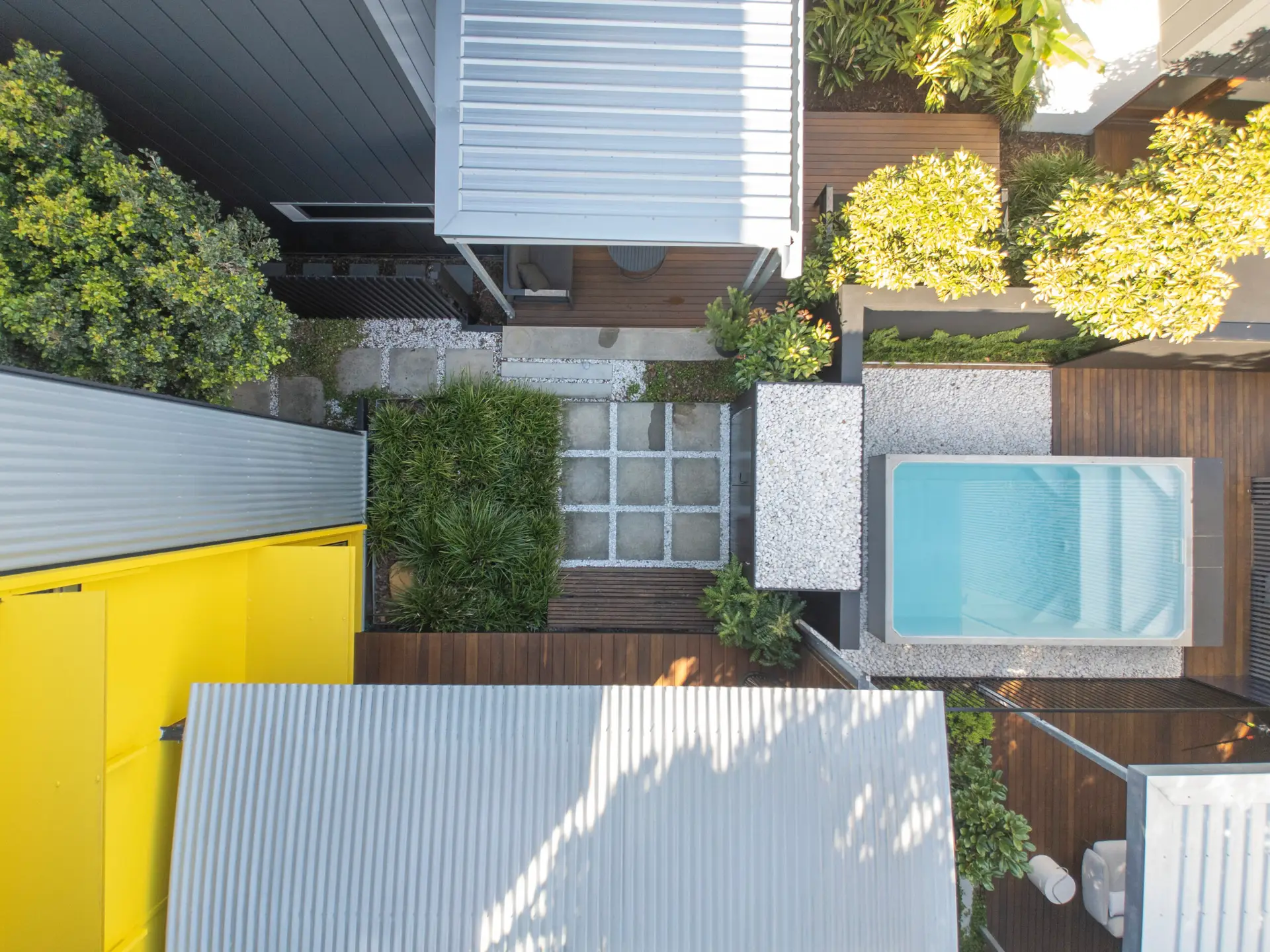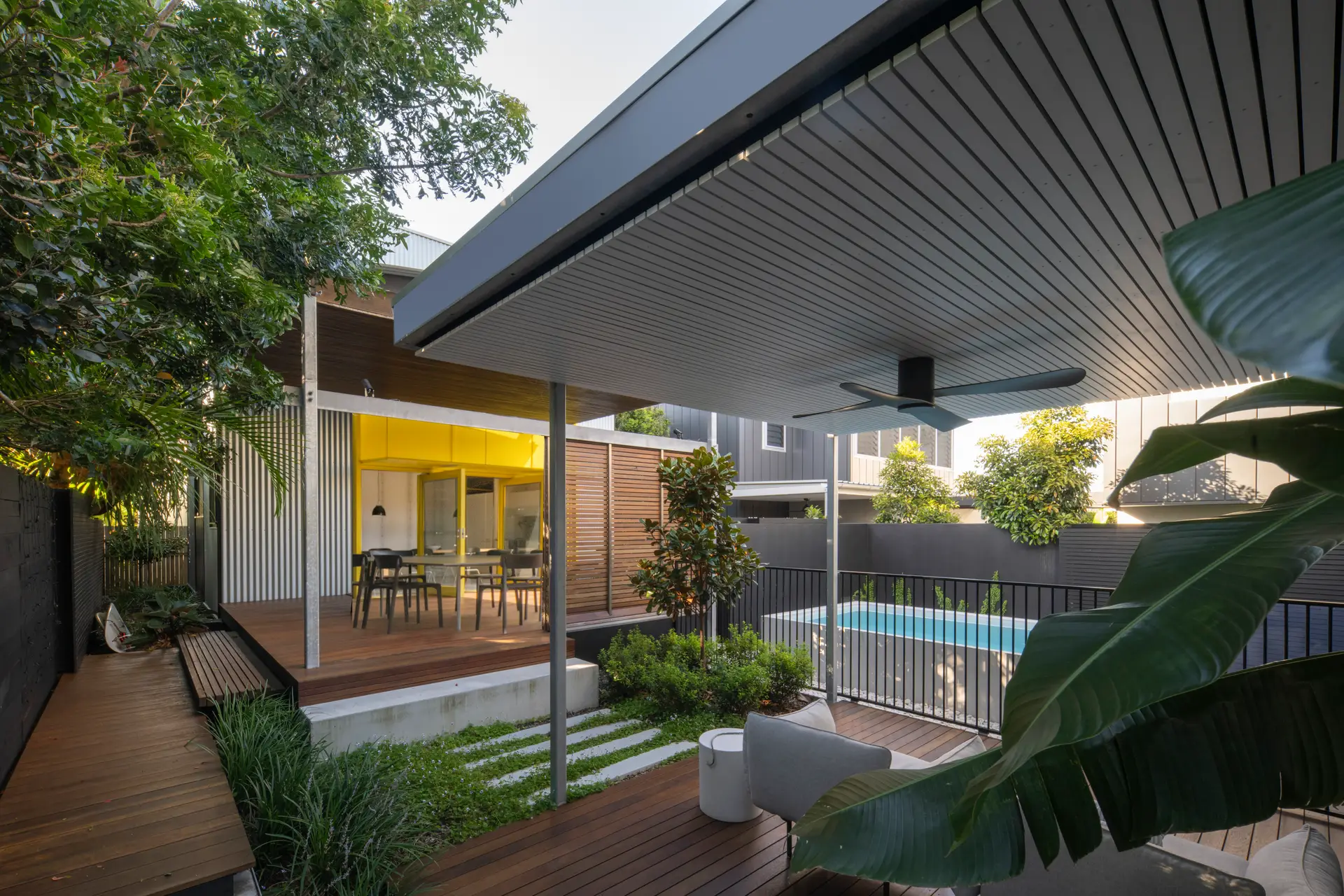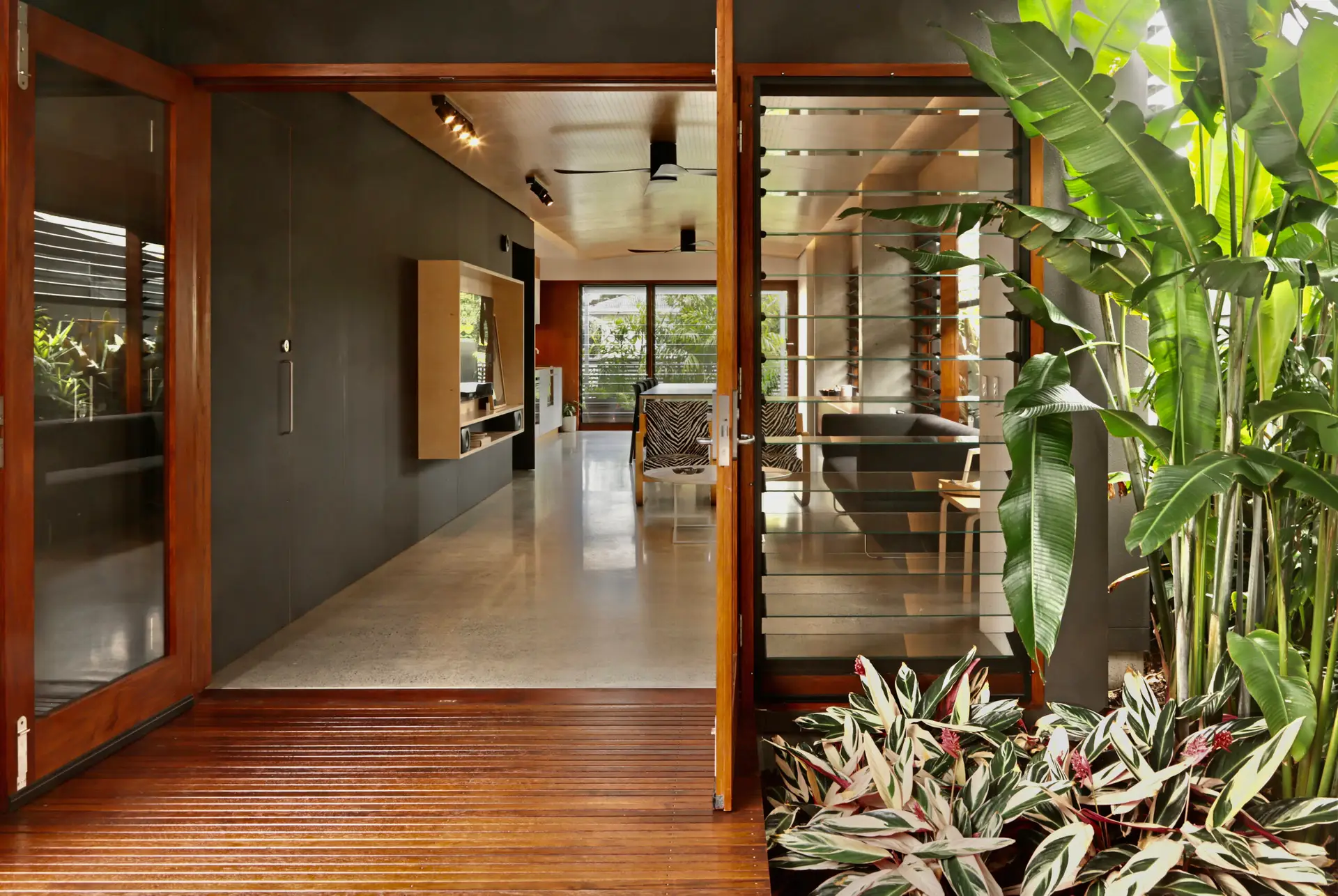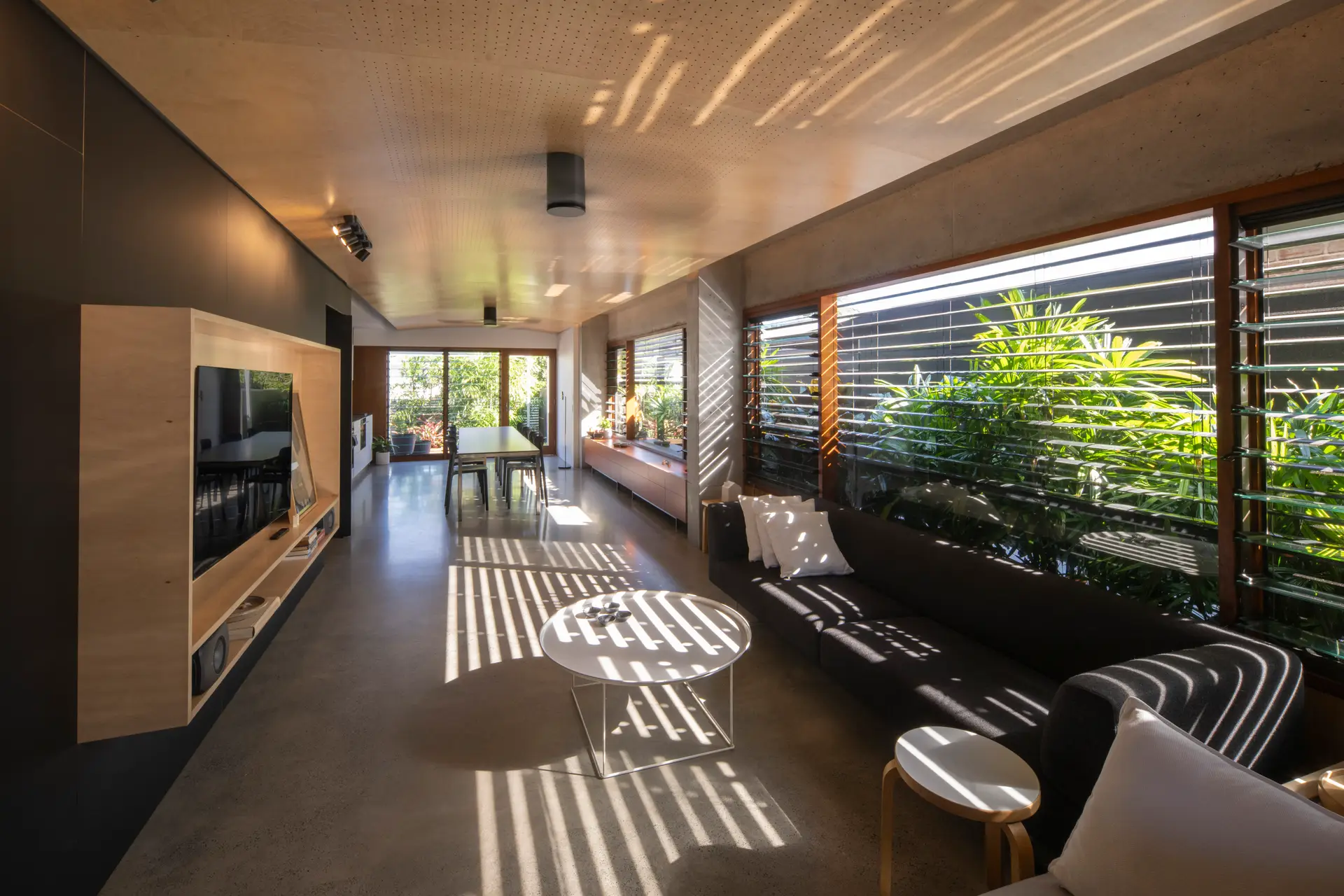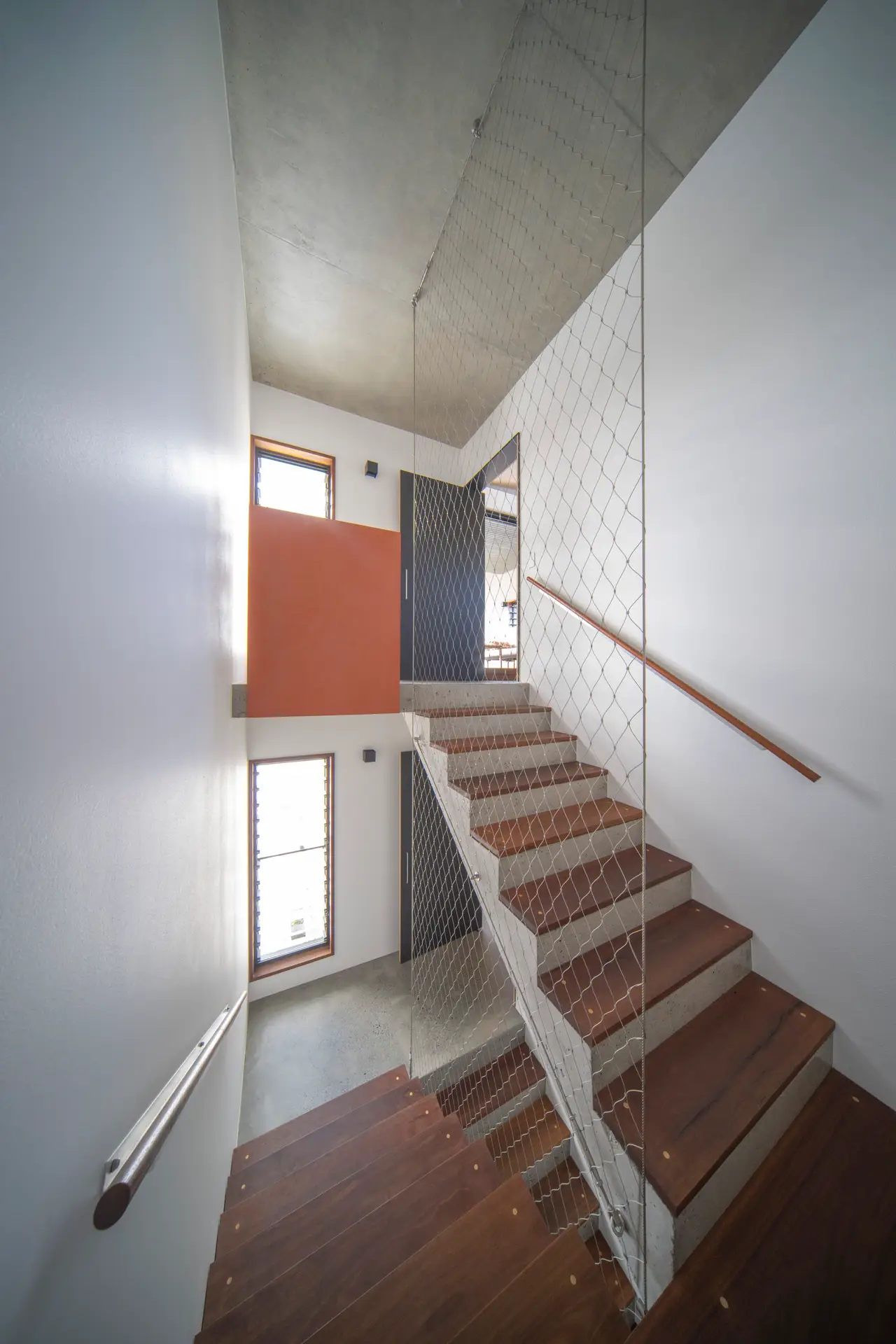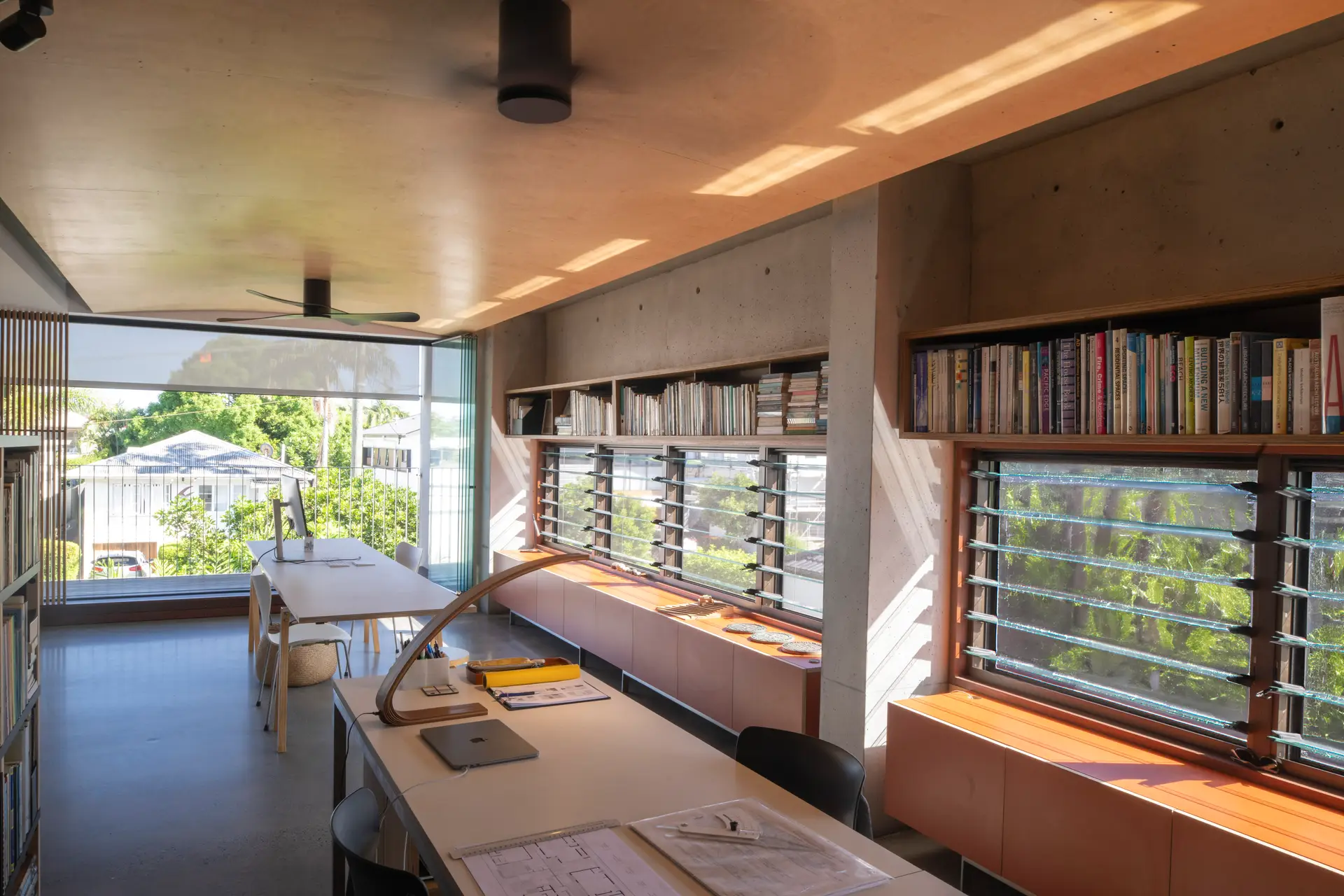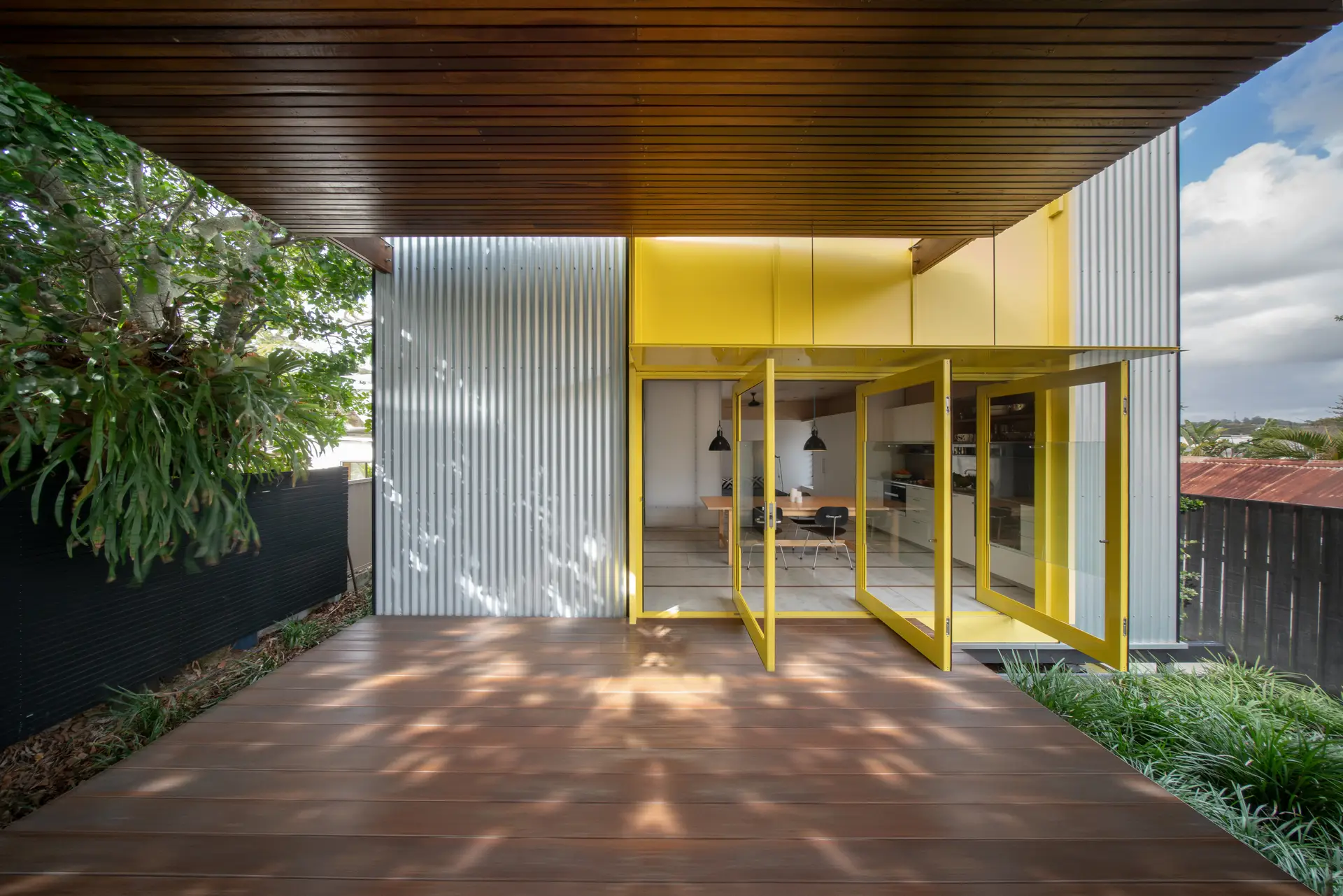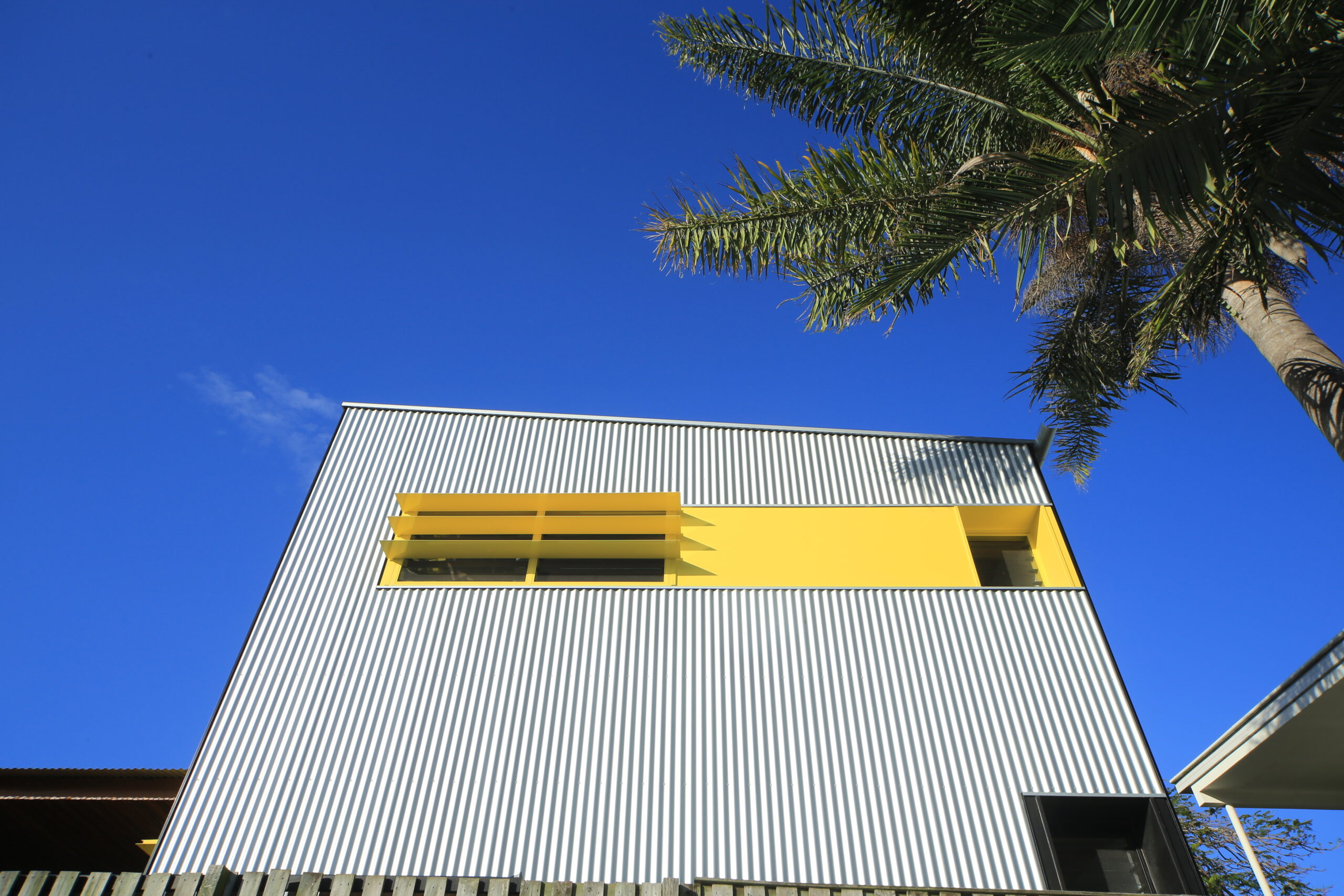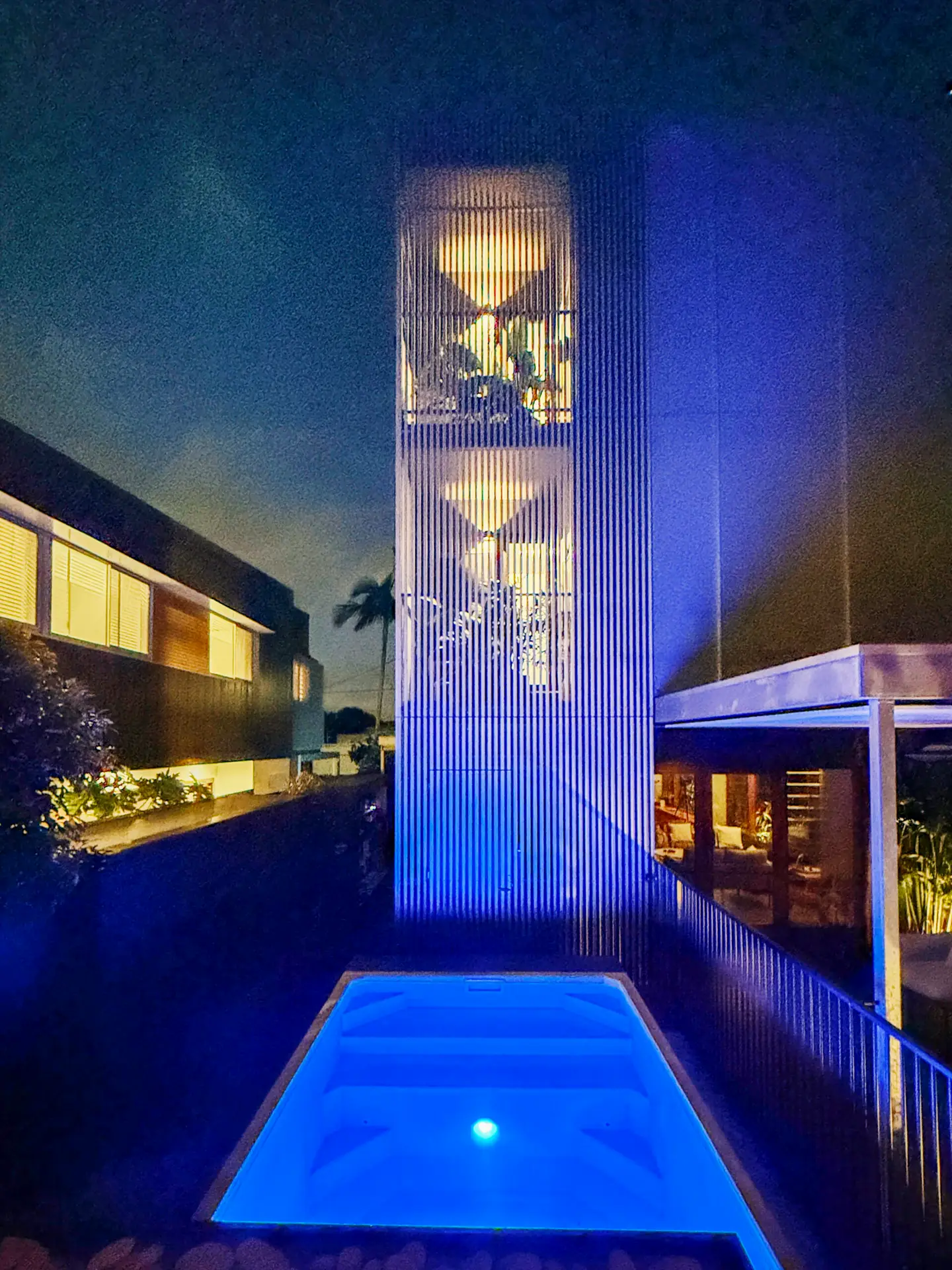Four Dwellings on 800m2 | Clare Design

2025 National Architecture Awards Program
Four Dwellings on 800m2 | Clare Design
Traditional Land Owners
Kombumerri
Year
Chapter
Queensland
Region
Gold Coast and Northern Rivers
Category
Builder
Photographer
Peter Hyatt
Media summary
Housing density and supply are ongoing issues for Australian cities. This small project demonstrates that density doesn’t mean loss of amenity or environmental performance. The four dwellings built on 800m2 are designed for autonomy with separate access and good privacy. Shared outdoor and landscaped spaces create areas where families can come together, or that can be used as private outdoor space. For ultimate flexibility each house has a separate guest area with kitchenette and bathroom. The two sites can comfortably accommodate an extended family of 20 people – each with their own self-contained space. Environmental responses have been consistently applied within each dwelling to optimise comfort through passive solar design and to reduce energy use. Materials, construction methods, orientation, sunshading, openings, water tanks and gardens have all been designed to sustain and support the extended family.
2025 National Awards Received
2025
Queensland Architecture Awards
Queensland Jury Citation
This project shows how smart design can create joyful, spacious living without the need for oversized homes. Built on two typical 10-metre-wide blocks, it includes a duplex, a house, and a granny flat, providing homes for up to 20 people. It proves that thoughtful architecture can support both privacy and connection, catering to different generations and household types.
Instead of focusing on size, the design uses innovative layouts and shared spaces to deliver comfort. The spaces between the buildings are just as important as the buildings themselves, lush gardens, breezy walkways, and shaded nooks invite people outside and foster a strong sense of community.
With a mix of materials, forms, and textures, the design is visually rich and characterful. This is urban consolidation done well: compact, beautiful, and human-scaled. It’s a clear reminder that small doesn’t mean and good design makes all the difference.
